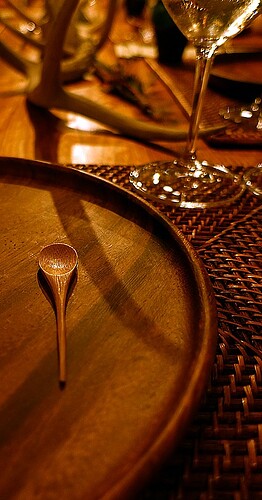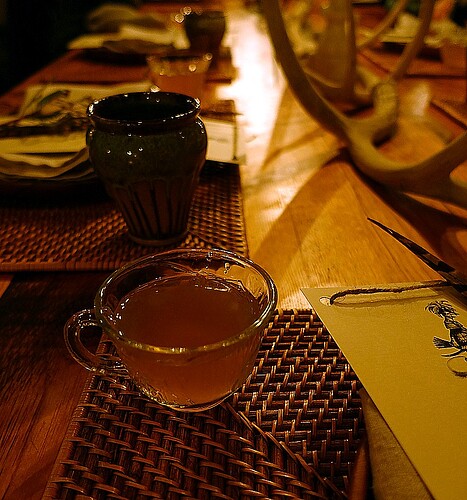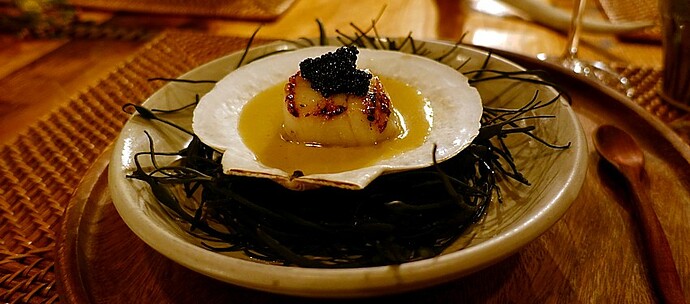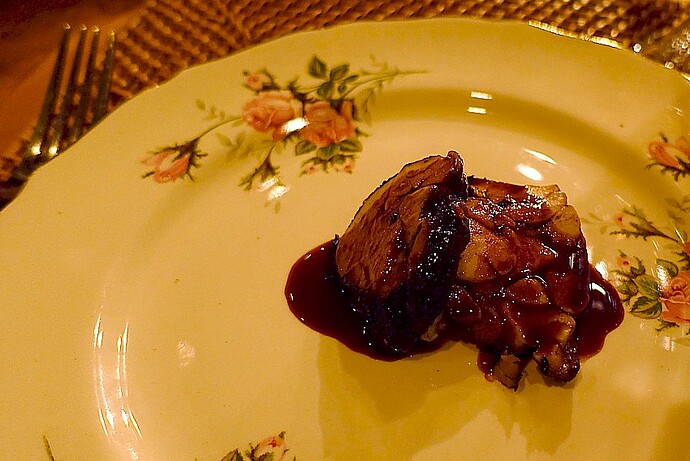For the man in charge of Hatchet Hall, a successful establishment featuring self-proclaimed American food, there have always been some key questions which have inevitably vexed Chef Brian Dunsmoor: What constitutes American cuisine? What did early Americans eat? And how has it evolved?
Fuss & Feathers, the ongoing seasonal dining series at Hatchet Hall, hopes to at least initiate the path into such culinary inquiry. Along the way, Chef Dunsmoor entices diners into trying some tidbits of what Americans ate generations ago. The dinner is named after “Old Fuss & Feathers”, the nickname given to 19th-Century soldier (and noted gourmand) General Winfield Scott. I was fortunate enough to grab a seat at the last winter dinner event back in February.
The menu for these special events involve more than just creating another curated tasting menu. Far from that - It serves as a history lesson, transporting patrons back to another time. The cooking methods used in the preparation of a typical Fuss & Feathers dinner have been painstakingly researched and emulated to local conditions as best possible by Chef Dunsmoor and his team. One can sense this pride in adherence to traditional throughout the evening, as each dish is presented. No modern-powered devices or machines were used in any portion of the kitchen prep: No food processors, no blenders, no convection ovens. In fact, the only concession to modernity in the entire preparation of the Fuss & Feathers meal is the boiling of water using a gas-powered oven. (“Because boiling water over an open fire can get really, really tedious,” confessed my server.)
Into the supper hall!!!
Punch… Apparently this was the high society way to invite guest into the dining room back in those days.
Rabbit Schnitzle, with Santa Barbara sea urchin… I’m not certain sea urchin was on the menu back in the day (who knows, maybe?), but this pairing of surf and turf worked surprisingly well.
Winter in the Raw… A trio of dishes made their appearance: Crab claw & sesame seeds, cured albacore tuna, and white shrimp in berry vinegar. Judge these white shrimp not by their size, for they pack quite a punch in terms of flavor.
Live Scallop, with New England clam chowder, caviar… That chowder was remarkable! It was nothing like what I expected.
Cornmeal Dumpling, with leather britches, pot likker… Preserving beans, boiling them back (leather britches), and then using the soup left over (pot liquor) were common practice back in the days. The soup in which the cornmeal dumpling rests possessed a taste like no other I had tried before: Reminiscent of a meaty soup, yet with a strongly vegetable, grassy note.
Oyster Roasted in Tinder, with cured mullet roe… The aroma of the smoky wood tinder was intoxicating. More than one person around our communal table surreptitiously held on to a piece or two of that magical wood for the occasional sniff for the remainder of the meal!
Maple Preserved Cranberries, with shrub, cider… The “power bar” of the colonial times, the high sugar content in the concoction was used to help settlers survive the harsh New England winters.
Maine Lobster, with Carolina gold rice middlins… Bits of lobster and its broth, with the gruel-like middlins as starch. Lobster was once the food of the poor before it ever found fame in the royal kitchens of Europe, and this course teaches us how the common folk may have eaten it.
Beef Tea, with winter bouquet… Ceps and dried winter herbs, reconstituted by beef boullion. Why don’t we do this sort of thing more often in the modern era?
Threadfin Sole Meunier Amandine, roasted on the bone, to be eaten by hand… Moist, tender, and flavorful. This dish would not feel at all out of place in a continental Michelin -starred eatery.
Veal Olive, with sweetbread, dungeness crab, madeira… Veal and seafood make another paired appearance - Really nice. I had totally expected that the crab would be drowned out by the veal on each bite, but it was actually the other way around!
Libation… To prepare us for the coup de grâce…?
Roast Beef, with root cellar vegetables… Perfectly cooked, and delightful paired with the coarse, heartily-cooked roots as sides!
Orange Citrus, with sweet cream & confections… I learned during this evening that our forefathers were not big on sweets, although the spartan dessert spread here at Hatchet Hall on this night did taste mighty good!
A fascinating time, for sure… Fuss & Feathers certainly delivers on the historical and educational fronts, supplying its audience with lots of archaic dishes and flavor combinations not seen in this day and age. Some happened to also be hits with the palate, notably the rabbit and uni combo, as well as the white shrimp, cornmeal dumplings, scallop in chowder, and threadfin sole on the bone. Is it worth the $150 per person price of admission? I certainly think so. In spring, Hatchet Hall will be selling its last season of Fuss & Feathers dinners: One seating each Thursday, from April 18th, through May 23rd. Space will be limited to only twelve patrons per night. If you are a fan of the culinary history, do yourself a favor and check it out.
Bonus: Nightcap at the adjacent Old Man Bar…
HIGHLY RECOMMENDED.
Fuss & Feathers (at Hatchet Hall)
12517 Washington Bl.
Los Angeles, CA 90066
Fuss & Feathers link































